Pressure‐sensing trip valves are for control applications where a specific valve/actuator action is required when supply pressure falls below a specific point. When supply pressure falls below the trip point (see below figure), the trip valve causes the actuator to fail up, lock in the last position, or fail down.
When the supply pressure rises above the trip point, the trip valve automatically resets, allowing the system to return to normal operation. The trip valve can be top‐mounted on a manifold, yoke‐mounted, or bracket‐mounted to match the application requirements.
Image Courtesy : Emerson
Principle :
In normal operation, supply pressure loads the upper diaphragm (see below figure) of the unit. The valve plug spring keeps the exhaust port closed.
Supply pressure also loads the lower diaphragm through the restriction, causing the plug assemblies to move down and isolate ports C and F while connecting port A to B and port D to E.
Image Courtesy : Emerson
Normal actuator control pressure flows from the control device to the top of the cylinder through ports A and B and to the bottom of the cylinder through ports D and E. A volume tank is charged to maximum supply pressure through a check valve in order to retain maximum supply pressure in the volume tank if supply pressure drops.
When supply pressure falls below the trip point pressure in the fail‐down mode (see below figure), the exhaust port opens, venting the supply pressure that is loading the lower diaphragm. This causes the upper ports of the plug assemblies to close and shut off normal pressure flow from the control device to the actuator.
Volume tank pressure then flows through ports C and B to the top of the actuator cylinder, while pressure in the bottom of the actuator cylinder is vented through ports E and F. The pressure imbalance created forces the actuator piston down.
When supply pressure is restored, it loads the upper and lower diaphragms, causing the trip valve to reset. The exhaust port closes. The upper ports of the plug assemblies open, and the lower ports close.
Normal actuator control pressure flow from the control device is restored through ports A and B and ports D and E. The check valve opens and recharges the volume tank to the maximum supply pressure.
Trip Valve Shown Tripped :
Image Courtesy : Emerson
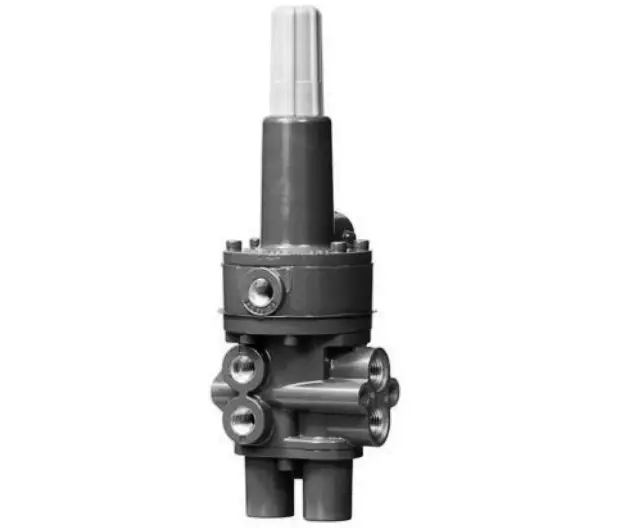
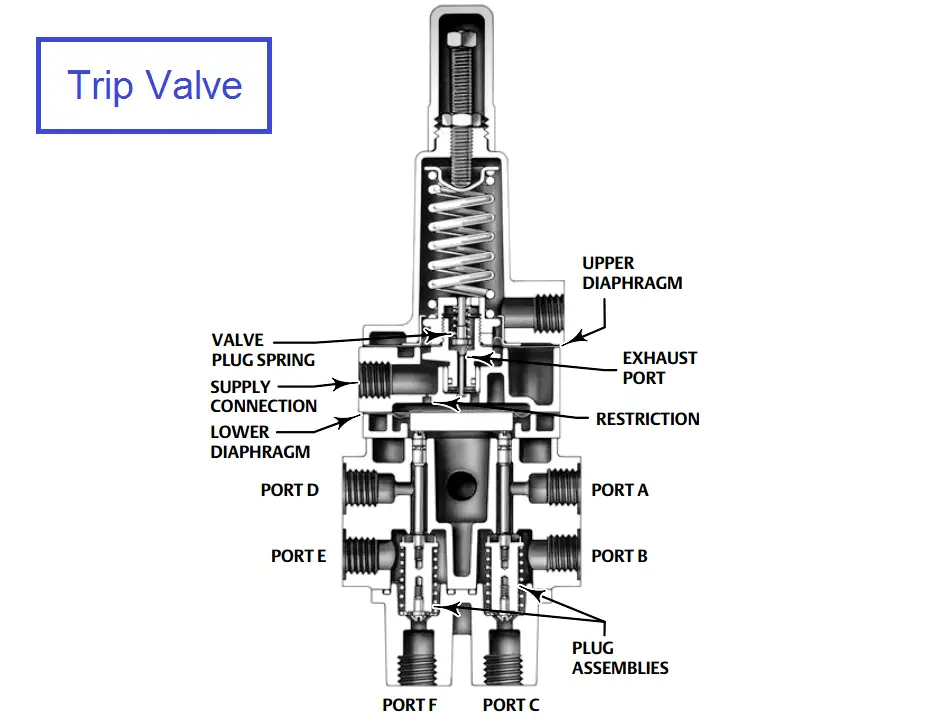
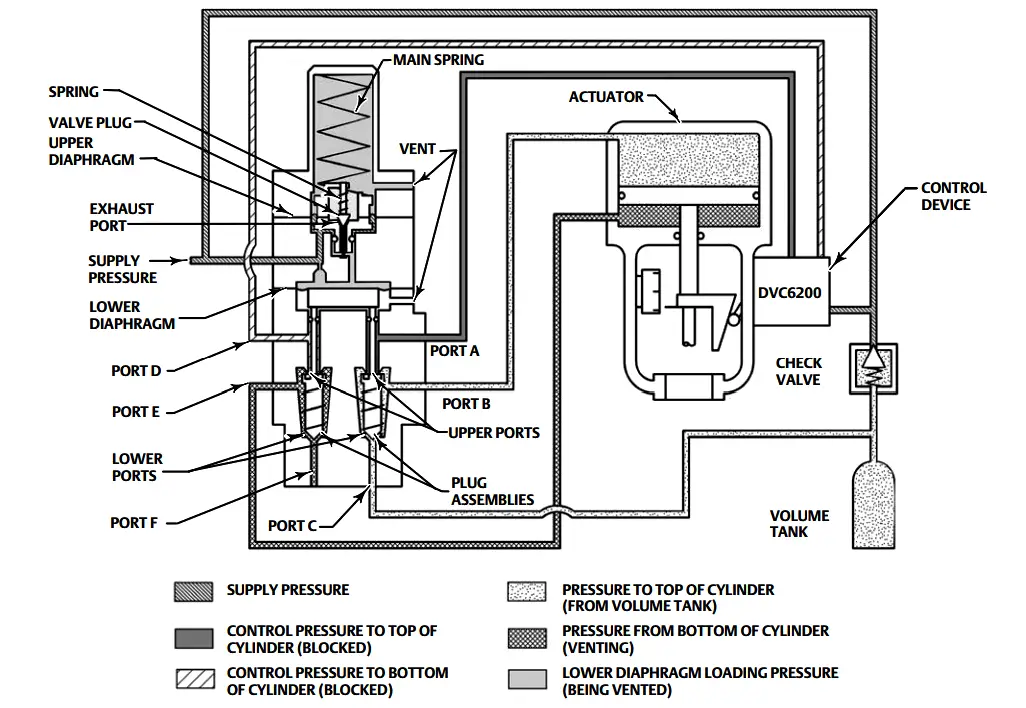
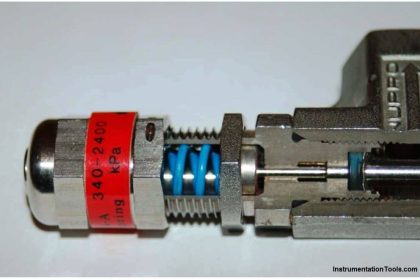
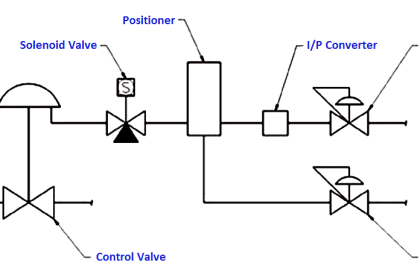
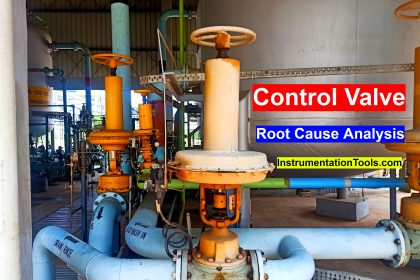
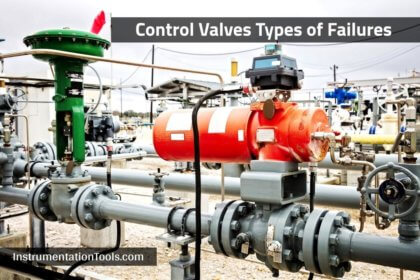
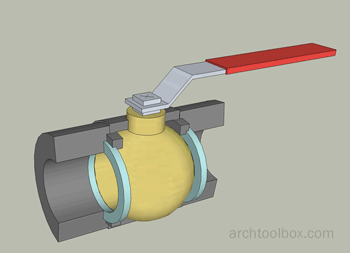
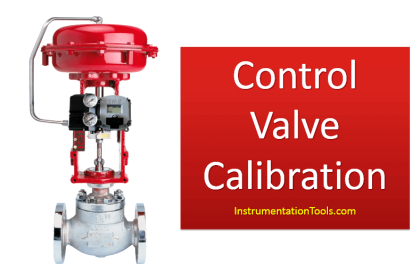
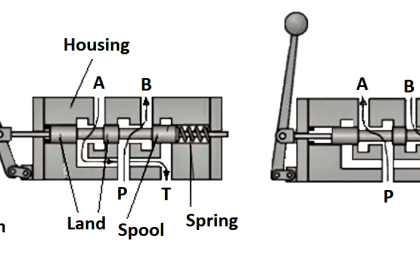
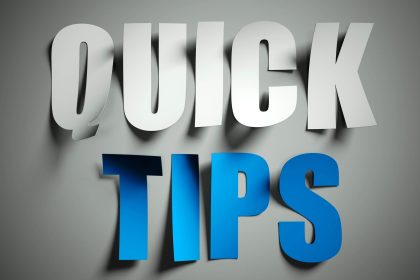
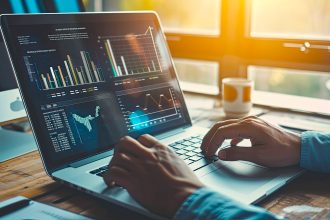

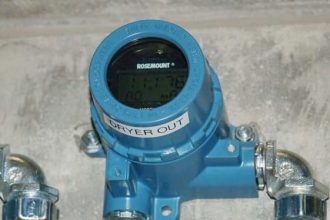
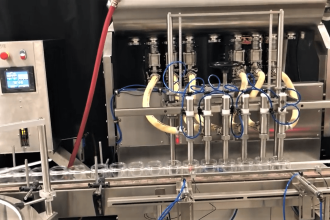
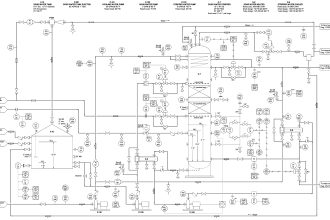
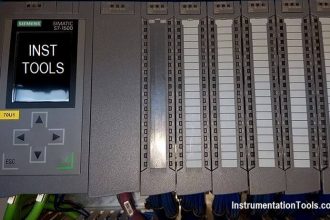
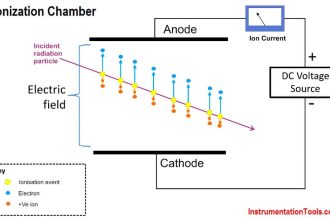
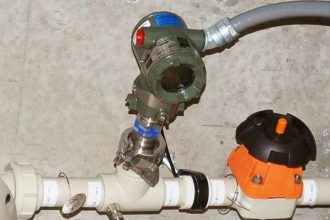

I’d like an animation GIF showing flow and switching action. For better understanding of this important device
than’k for the documents